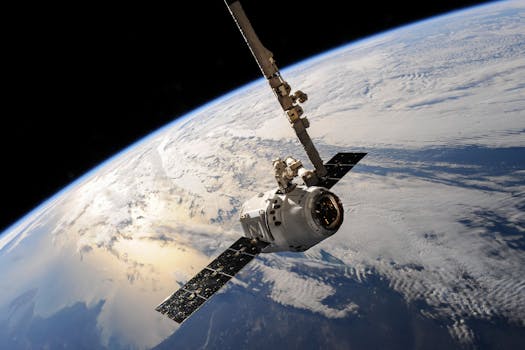
GEO Satellites: The Backbone of Global Connectivity
GEO satellites, or Geostationary Orbit satellites, are a type of satellite that orbits the Earth at an altitude of approximately 36,000 kilometers, remaining stationary relative to a fixed point on the equator. The focus keyword GEO satellites is essential in understanding the significance of these satellites in modern telecommunications. GEO satellites have been a cornerstone of global connectivity, providing a wide range of services including television broadcasting, telecommunications, weather forecasting, and navigation. With the increasing demand for global connectivity, GEO satellites continue to play a vital role in bridging the digital divide and enabling communication, navigation, and remote sensing applications.
The first GEO satellite, Syncom 2, was launched in 1963, and since then, numerous GEO satellites have been launched, with many more planned for the future. These satellites are designed to operate for 15 years or more, providing a reliable and stable platform for various applications. One of the primary advantages of GEO satellites is their ability to provide continuous coverage of a specific region, making them ideal for applications such as television broadcasting, telecommunications, and weather forecasting.
Applications of GEO Satellites
GEO satellites have a wide range of applications, including television broadcasting, telecommunications, weather forecasting, and navigation. Television broadcasting is one of the most common applications of GEO satellites, with many channels being broadcast via satellite to a global audience. Telecommunications is another significant application, with GEO satellites providing internet connectivity, voice, and data services to remote and underserved areas. Weather forecasting is also a critical application, with GEO satellites providing high-resolution images of the Earth’s atmosphere, enabling meteorologists to track weather patterns and predict storms.
Navigation is another essential application of GEO satellites, with many navigation systems, such as GPS, relying on a network of GEO satellites to provide location information and timing signals. Remote sensing is also a significant application, with GEO satellites providing high-resolution images of the Earth’s surface, enabling scientists to monitor climate change, track natural disasters, and manage natural resources.
Challenges and Opportunities
Despite the many advantages of GEO satellites, there are also several challenges and opportunities that need to be addressed. One of the primary challenges is the increasing congestion in the GEO orbit, with many satellites operating in a limited amount of space. This congestion can lead to interference, collisions, and other issues that can impact the performance of GEO satellites.
Another challenge is the high cost of launching and operating GEO satellites, which can make it difficult for some organizations to access the benefits of these satellites. However, there are also opportunities for innovation and development, with new technologies and business models emerging that can help to reduce the cost and increase the efficiency of GEO satellites.
Conclusion
In conclusion, GEO satellites play a vital role in providing global connectivity, enabling communication, navigation, and remote sensing applications. With the increasing demand for global connectivity, GEO satellites will continue to be an essential part of the telecommunications infrastructure. As technology continues to evolve, we can expect to see new and innovative applications of GEO satellites, enabling us to bridge the digital divide and provide access to information and services to people around the world.

